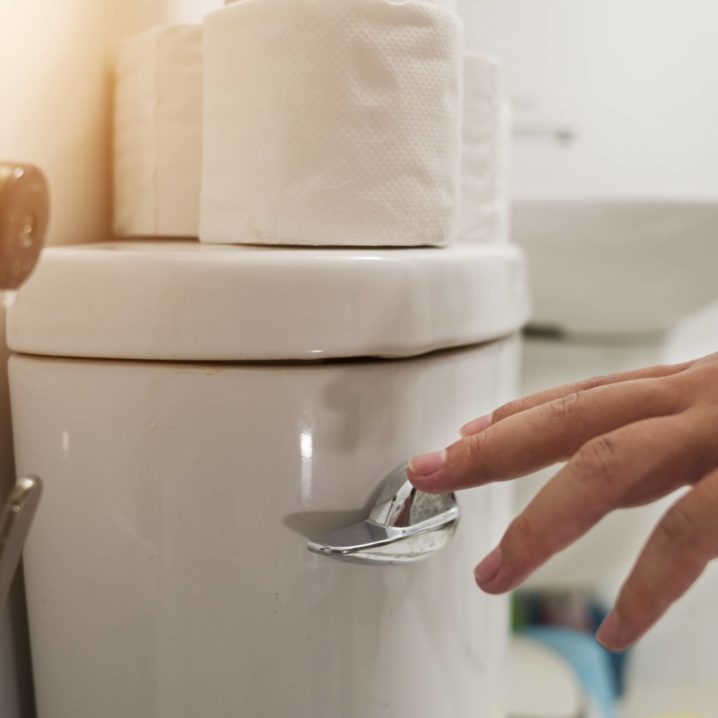
- POPSUGAR Australia
- Fitness
- A Flush of the Toilet May Contaminate the Air With Coronavirus, a New Study Says
A Flush of the Toilet May Contaminate the Air With Coronavirus, a New Study Says

During the coronavirus pandemic, everyday activities have become sources of anxiety, from traveling on public transportation to eating in a restaurant to touching your face. Now, new research suggests that an action as unavoidable as flushing a toilet might be yet another way for the virus to spread.
When you flush a toilet, a “turbulent flow” of water pours into the toilet bowl, pushing a plume of aerosols up into the air. According to a simulation-driven study published in Physics of Fluids, 40-60 percent of those particles are capable of traveling above the bowl, the highest flying over three feet from the ground. During a pandemic, that cloud isn’t just gross – it could be dangerous. Once it hits the open air, the plume of aerosol is free to spread and be inhaled by others, along with any infectious coronavirus particles from stool or those already floating in the air. The paper’s simulations specifically focused on how those coronavirus particles would travel during a toilet flush.
The study’s authors called the findings “alarming,” especially given the current research on coronavirus particles in stool; past studies have found viable coronavirus particles in feces and in toilet bowls in hospital rooms. In 2003, the SARS virus (also a form of coronavirus) infected over 300 people in a Hong Kong apartment complex due to infectious fecal aerosols and defective plumbing and ventilation systems, according to The New York Times. In other words, the current coronavirus is likely present in stool, and fecal-oral transmission of a similar virus has occurred in the past.
Related: Here Are 5 Coronavirus Safety Factors to Consider Before Going Back to the Gym
It’s not clear whether bathrooms have served as a transmission point for the current novel coronavirus, but this new research shows that the potential is there. While the researchers haven’t tested the movement of aerosol plumes from real-world toilets, they found that the simulated toilet flushes led to “large-scale virus spread.”
Fortunately, they also suggested a few simple ways to head off the problem both in public restrooms and in your home.
- Put down the toilet lid before flushing. While this isn’t always possible in public bathrooms, simply lowering the toilet lid “can basically prevent virus transmission,” researchers wrote.
- Clean the toilet seat before use. “Floating virus particles could have settled on its surface,” researchers noted. Make sure to use soap or disinfecting products that are 60 percent alcohol and/or contain sodium hypochlorite; here’s more on cleaning products that fight coronavirus.
- Wash your hands after flushing. “Virus particles may be present on the flush button and door handle,” researchers said. Make sure to wash your hands with soap and water and for at least 20 seconds. (Here are more tips on hand-washing to prevent COVID-19.)
Related: Study Says Shutdowns Put in Place Avoided 60 Million More Coronavirus Infections in the US

